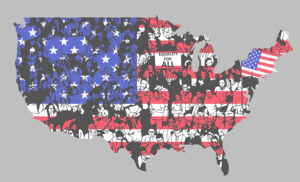43 Percent of American Households Can’t Afford Basic Needs
“People are being told that they're doing better—but they aren't.” Sander van der Wel / Flickr Creative Commons
Sander van der Wel / Flickr Creative Commons
Donald Trump may be celebrating the fact that America’s unemployment rate is at its lowest level in nearly two decades, but that’s not enough for the alarming number of American families still struggling to put food on the table and pay their rent.
On Thursday, the United Way’s ALICE project released a study showing, as CNN reports, “Nearly 51 million households don’t earn enough to afford a monthly budget that includes housing, food, child care, health care, transportation and a cell phone.”
These numbers include both the 16.1 million families living at or below the federal poverty line (currently $24,600 for a family of four) and the 34.7 million families the United Way calls ALICE, or Asset Limited, Income Constrained, Employed. This means people who earn too much to qualify for federal poverty programs but are still unable to cover their monthly expenses.
The severity of the problem varies by state. California, New Mexico and Hawaii have the highest number of struggling families, at 49 percent. By contrast, North Dakota has the lowest, at 32 percent.
As CNN quotes the study, the families represent “… the nation’s child care workers, home health aides, office assistants and store clerks, who work low-paying jobs and have little savings. … Some 66% of jobs in the US pay less than $20 an hour.”
More low-wage jobs may decrease the unemployment rate, but employment doesn’t mean families can pay their bills. Stephanie Hoopes, a founding author of the study, explained this frustration, telling NJ.com that “the rate of inflation in the past 10 years has been about 9 percent, but the cost of living for ALICE families has risen by nearly twice that.” As a result, she explained, “There’s a sense of frustration or even anger because people are being told that they’re doing better but they aren’t.”
This may be because the benefits of lower unemployment rates, lower inflation and higher wages are not being distributed equally. In fact, even when, in 2016, federal data showed that median household net worth was up across income brackets, the wealthiest Americans did the best.
According to the Federal Reserve’s Survey of Consumer Finance, the top 1 percent of wealthy Americans now holds 38.6 percent of the nation’s wealth, up from 33.7 percent in 2007. The bottom 90 percent of Americans had only 22.8 percent of the nation’s total wealth in 2017, down from 28.5 percent in 2007.
Your support matters…Independent journalism is under threat and overshadowed by heavily funded mainstream media.
You can help level the playing field. Become a member.
Your tax-deductible contribution keeps us digging beneath the headlines to give you thought-provoking, investigative reporting and analysis that unearths what's really happening- without compromise.
Give today to support our courageous, independent journalists.








You need to be a supporter to comment.
There are currently no responses to this article.
Be the first to respond.